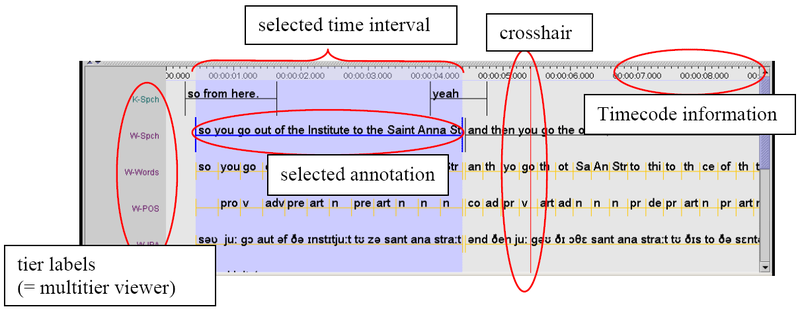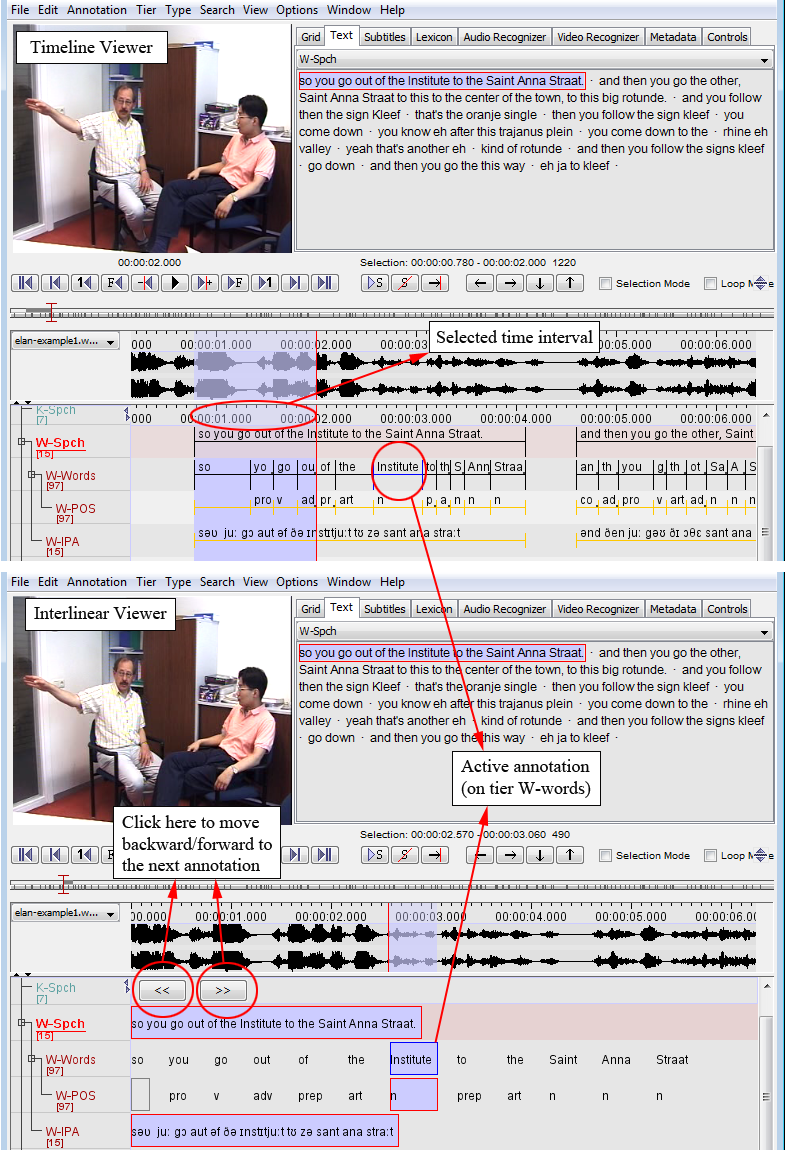The Timeline Viewer and the Interlinear Viewer
All annotations can be displayed in the Timeline Viewer or the Interlinear Viewer. Only one of the two Viewers can be switched on at a time.
The Timeline Viewer is always shown when a document is opened in ELAN. It displays the tiers and their annotations, whereby each annotation corresponds to a specific time interval. Because the display of an annotation is limited to this time interval, an annotation does not always fit in the annotation frame. A small grey square is the bottom right corner of the upper part of a annotation frame indicates that an annotation is truncated.
The height of the tiers can be reduced to make more tiers visible. To do so, open
, select Viewers, check
Reduced Tier Height and click . Above the
tiers, a time scale is displayed. This time-scale can be hidden by right clicking in the
Timeline Viewer and clicking on in the
context menu. In the same manner it can be made visible again.
The horizontal resolution of the timeline can be changed by zooming in or out. There are several ways to do this, as described in the following section (the section called “Changing the time zoom”).
During playback, a red vertical bar, the crosshair, moves through the annotations and indicates the current point in time. Normally the crosshair will start from the left if it reaches the right side of the viewer. If you right click in the Timeline Viewer and select Ticker Mode, the crosshair will stop when it reaches the center of the viewer, while the viewer itself scrolls to the left.
Whenever you have selected a time interval, it will be highlighted in light blue; and whenever you have selected an annotation, this becomes the active annotation and will be highlighted in a dark blue frame.
If desired the latter can also be indicated with a bold line. To activate this, right click on an annotation somewhere in the timeline viewer and check the box in the context menu.
Figure 96. The timeline viewer
 |
In the Timeline Viewer you can (a) select and modify time intervals (see the section called “How to make a selection”) and (b) enter annotations (see the section called “How to enter and edit annotations”).
The Interlinear Viewer offers an alternative perspective on the tiers and their annotations. It shows parent-child relations between annotations using vertical text alignment (interlinearization). You can enable it selecting the radio button when you right-click on the tier name’s panel and select . Switching it on, will automatically switch off the Timeline Viewer.
The following screenshots compare how information is displayed in the two Viewers.
Figure 97. The ELAN window with timeline/interlinear viewer
 |
Whenever the Interlinear Viewer is switched on, it displays an annotation block (i.e., an independent, time-alignable parent annotation together with its referring annotations, see the section called “Basic Information: Annotations, tiers and tier types”). To move forward/backward to the next block, click on the icons at the top of the Viewer. During playback, the Viewer automatically moves forward to the next annotation block.
The Interlinear Viewer differs from the Timeline Viewer in that it does not allow to modify the time interval or to enter new annotations. It is similar to the Timeline Viewer in that it allows to edit existing annotations. A more versatile variant of the Interlinear Viewer is available as the the section called “Interlinearization mode” working mode.